This annual intellectual highlight commemorates Edmund R. Michalik’s long history with the University of Pittsburgh and the Department of Mathematics. He received his BA in education from Pitt in 1937 and went on to receive his MS in mathematics in 1940. After he graduated, Michalik joined the Navy to serve during WWII. The day after he was discharged in 1946, he met his future wife, Martha. He came back to teach at Pitt until 1951. Over the next few years Michalik worked for a variety of organizations, including the Army, Atlantic Research Corporation and the Department of Mathematics at the Mellon Institute, where he was the head of applied mathematics. In 1957 he worked for PPG as the head of the applied mathematics, and later as the senior engineer and head of computer research, when he retired in 1980. Throughout this time Michalik volunteered his time and taught as an adjunct professor in the Department of Mathematics. He was dedicated to the study of mathematics.
2025

Camillo De Lellis
IBM von Neumann Professor, Department of Mathematics
Institute for Advanced Study
Location: Frick Fine Arts 125
Camillo De Lellis, a geometric analyst, has broad expertise in the calculus of variations, geometric measure theory, and fluid dynamics. Using modern tools and innovative approaches, De Lellis has contributed to central problems in analysis and geometry, resulting in the creation of a transparent proof of regularity and opening new lines of inquiry for geometric analysts to explore.
2024
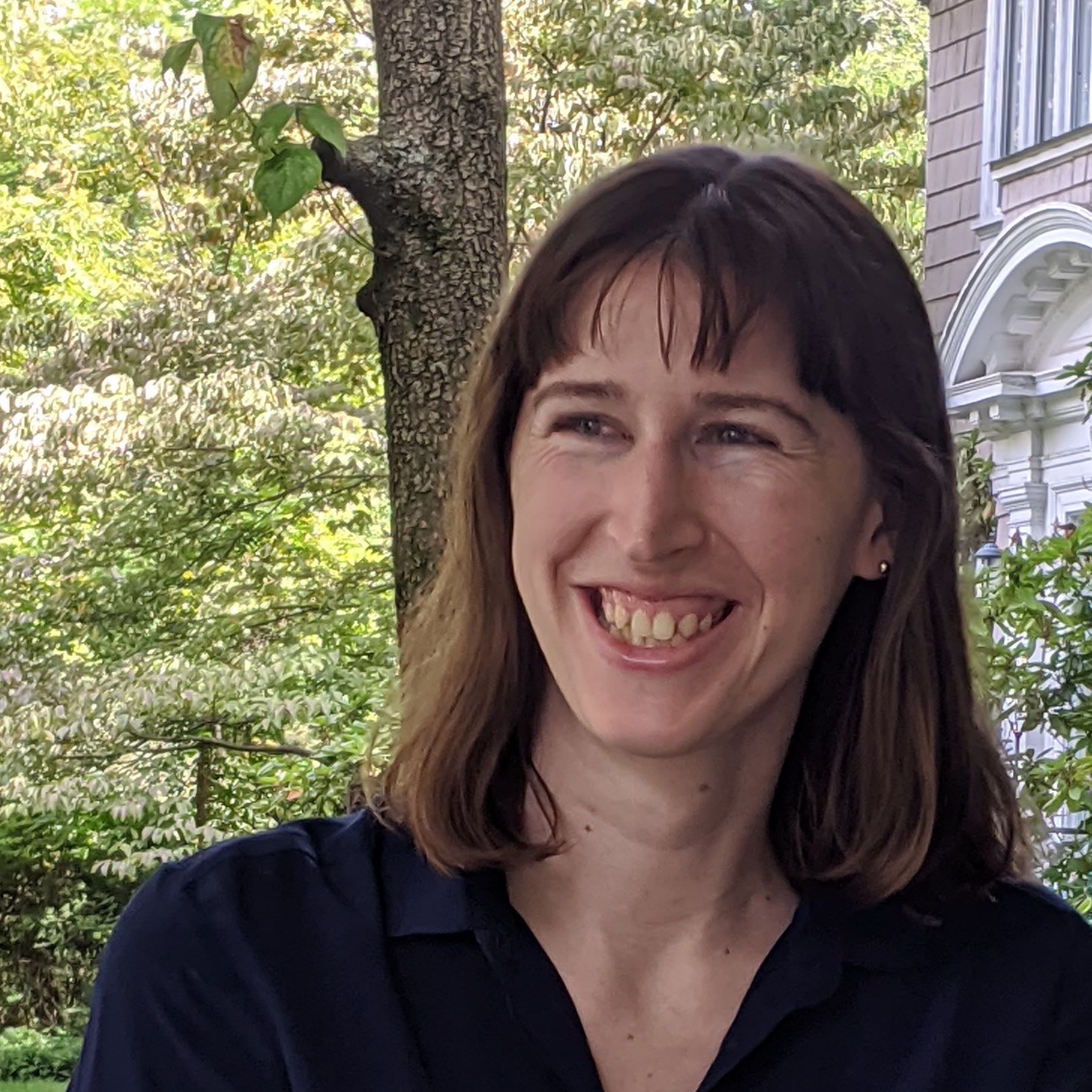 Heather Macbeth
Heather Macbeth
Assistant Professor, Department of Mathematics
Fordham University
October 25, 2024
125 Frick Fine Art Building
After decades of work by mathematicians called "theoretical computer scientists", computer systems for formalization -- expressing proofs as strict chains of logical reasoning, down to the axioms -- are now powerful and user-friendly enough for modern research mathematics. And indeed, instances of hot-off-the-press theorems being formalized are starting to accumulate, including Hales' proof of the Kepler conjecture, Clausen-Scholze's work on condensed mathematics, and Gowers-Green-Manners-Tao's proof of the Polynomial Freiman-Ruzsa conjecture.
These developments suggest new paradigms for the interaction of mathematics and computation. Computer formalization systems (called ITPs, for "interactive theorem provers") can explain to us what our "abstract nonsense" means, and force us to explain to them what we mean by "routine" proofs; in both cases an implicit algorithm is made explicit. ITPs are the ideal vehicle for very computational proofs -- so much so that the line between "brute force" proofs and "principled" proofs begins to blur. And seemingly in contrast to this, ITPs may nudge us toward a different style of mathematical discovery, less reasoned and more intuitive.
2023
 Dr. Mason Porter
Dr. Mason Porter
Professor, Department of Mathematics
University of California Los Angeles
November 3, 2023
University Club, Ballroom B
Mason Porter is a professor in the Department of Mathematics at UCLA. He also has a secondary appointment in UCLA's Department of Sociology and is an External Professor of Santa Fe Institute. Mason earned his B.S. in Applied Mathematics at Caltech in 1998 and his Ph.D. from the Center for Applied Mathematics at Cornell University in 2002. After postdoctoral positions at Georgia Tech, Mathematical Sciences Research Institute, and Caltech, Mason joined the faculty in the Mathematical Institute at University of Oxford in 2007. He moved to UCLA in 2016. Mason studies many topics in complex systems, networks, and nonlinear systems. Thus far, twenty-six PhD students have completed their doctorates under Mason's mentorship; he has also mentored many postdoctoral scholars and undergraduate students. In 2017, Mason received the Council on Undergraduate Research (CUR) Faculty Mentoring Award (Advanced Career Category) in the Mathematics and Computer Science Division. Mason is a Fellow of the American Mathematical Society, the American Physical Society, and the Society for Industrial and Applied Mathematics.
2022
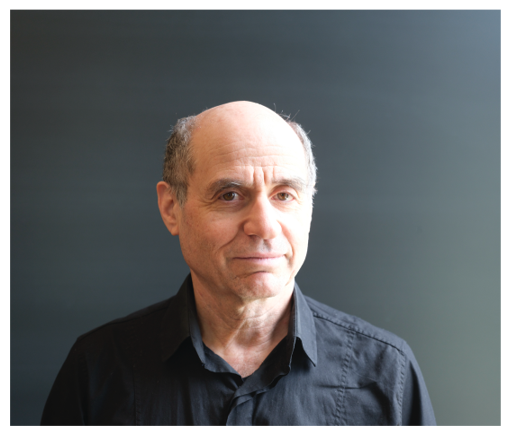
2021
 Dr. Diane Henderson
Dr. Diane Henderson
Professor, Department of Mathematics
Penn State University
October 15, 2020
University Club Ballroom B
Oceanographers in the 60s conducted an ambitious experiment in which they tracked waves that were generated by large storms near New Zealand across the Pacific Ocean until they hit the beaches at Alaska. Paradoxically, at about the same time, mathematicians in the Soviet Union, the U.S., and England separately developed mathematical models that predicted such waves to be unstable, meaning that they could not survive to be tracked all the way across the Pacific. In the 70s experimentalists conducted laboratory experiments on these types of waves. They generated waves with a given frequency that propagated down a wavetank, but at the end of the wavetank, the waves had a slightly lower frequency. The mathematical model did not explain this observation. In this talk, we consider these observations and more recent ones within the framework of the mathematical model, the scalar and vector nonlinear Schroedinger equations. These partial differential equations are examples of integrable systems; they also model phenomena observed in optics and in plasmas. They have special mathematical properties, some of which we use to determine when they are adequate models of water waves. We use the field and laboratory experiments to guide variations of the models with the goal of accurately predicting the observations.
2020
 Bernd Sturmfels
Bernd Sturmfels
Director, Max-Planck Institute for Mathematics in Sciences, Leipzig, Germany
Professor of Mathematics, Statistics, and Computer Science
University of California at Berkely
2019
Prof. Enrique Zuazua
Alexander vonHumbolt Professor of Applied Mathematics
Friedrich-Alexander-Universitat, Erlanger-Nurnberg
2018
Thanks to the generosity of the Michalik family and in honor of Edmund R. Michalik, the Department of Mathematics this semester brought Professor Martin Nowak to Pitt for two exciting events that provided a mathematical connection with Pitt's "Year of the Healthy U" theme. Nowak is a Professor of Mathematics and Biology and the Director of the Program for Evolutionary Dynamics at Harvard University. He is a world expert on evolutionary game theory (e.g, including the evolution of cooperation and other altruistic-seeming behaviors), population structures, cancer dynamics and treatment, and a range of other topics. He has written several hundred articles and has published books on virology, evolutionary dynamics, and cooperation.
On Wednesday, March 21st, Dr. Nowak was joined by Dr. Gilles Clermont (Pitt Critical Care Medicine and long-time collaborator of several current Pitt Mathematics faculty), Dr. David Galloway (Pitt Public Health Dynamics Lab), and Dr. Wilbert Van Panhuis (Pitt Epidemiology/Biomedical Informatics) for a panel on "Computational Methods for Fostering a Healthy Community". This event  was organized by the Department of Mathematics and was moderated by Dean Donald Burke from Pitt's Graduate School of Public Health. The panelists discussed mathematical modeling of the complex interacting feedback loops associated with the immune response, the use of the FRED (A Framework for Reconstructing Epidemiological Dynamics) agent-based modeling system to predict geographic spread of disease outbreaks, the Project Tycho open-access global database of disease-related information, and how mathematical analysis of cancer as an evolving system can be used optimize cancer treatments. They also took questions from an audience eager to understand how mathematics and data can combine to revolutionize how we study and improve community health.
was organized by the Department of Mathematics and was moderated by Dean Donald Burke from Pitt's Graduate School of Public Health. The panelists discussed mathematical modeling of the complex interacting feedback loops associated with the immune response, the use of the FRED (A Framework for Reconstructing Epidemiological Dynamics) agent-based modeling system to predict geographic spread of disease outbreaks, the Project Tycho open-access global database of disease-related information, and how mathematical analysis of cancer as an evolving system can be used optimize cancer treatments. They also took questions from an audience eager to understand how mathematics and data can combine to revolutionize how we study and improve community health.
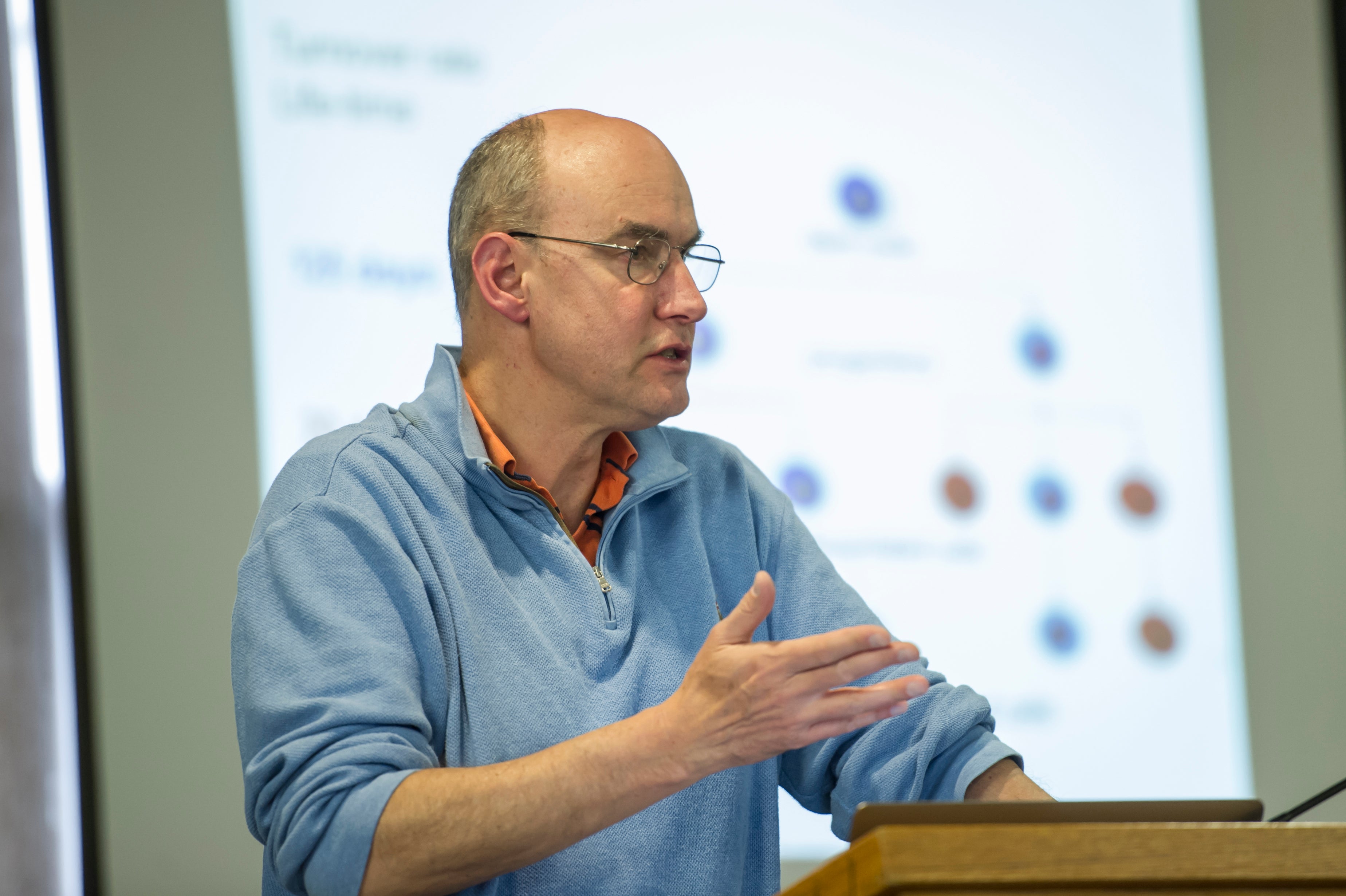 On Thursday, May 22nd, Dr. Nowak gave the Edmund R. Michalik Distinguished Lecture on "Evolutionary Dynamics". Nowak outlined principles of evolution, listing familiar ones such as mutation and selection but also proposing that cooperation belongs on the list as well. He discussed how mathematical frameworks, such as Moran or birth-death processes, graph theory, and evolutionary game theory (related to the methods applied in economics by famed mathematician John Nash), can be used to study the selection process. In particular, his mathematical analysis illustrated how certain patterns of interactions among individuals can allow a population to gain maximal advantage from cooperation. The lecture was well attended, with faculty and students both well represented in the audience, and led to interesting discussions about language, artificial intelligence, and, of course, the role of mathematics in understanding the living world.
On Thursday, May 22nd, Dr. Nowak gave the Edmund R. Michalik Distinguished Lecture on "Evolutionary Dynamics". Nowak outlined principles of evolution, listing familiar ones such as mutation and selection but also proposing that cooperation belongs on the list as well. He discussed how mathematical frameworks, such as Moran or birth-death processes, graph theory, and evolutionary game theory (related to the methods applied in economics by famed mathematician John Nash), can be used to study the selection process. In particular, his mathematical analysis illustrated how certain patterns of interactions among individuals can allow a population to gain maximal advantage from cooperation. The lecture was well attended, with faculty and students both well represented in the audience, and led to interesting discussions about language, artificial intelligence, and, of course, the role of mathematics in understanding the living world.
2017
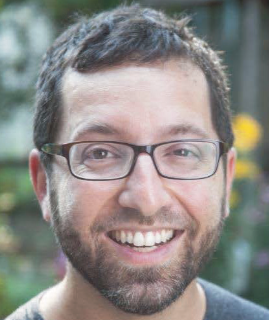 Jordan Ellenberg
Jordan Ellenberg
John D. MacArthur Professor of Mathematics, University of Wisconsin at Madison
February 28, 2017
Ballroom, O'Hara Student Center
New York Times bestselling author Jordan Ellenberg has been writing for a general audience about math for more than fifteen years and his work has appeared in the New York Times, the Wall Street Journal, the Washington Post, Wired, The Believer, and the Boston Globe. He is author of How Not to Be Wrong: The Power of Mathematical Thinking (Penguin Press, 2014).
2016
Prof. J. Tinsley Oden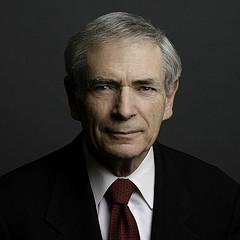
Foundations of Predictive Computational Science:Selection and Validation of Models of Complex Systems in the Presence of Uncertainty
September 23, 2016
Ballroom, O'Hara Student Center
J. Tinsley Oden is Associate Vice President for Research, Cockrell Family Regents' Chair in Engineering No. 2, Peter O'Donnell Jr. Centennial Chair in Computing Systems, and the founding Director of the Institute for Computational Engineering and Sciences at The University of Texas at Austin. His research is on the mathematical theory and implementation of numerical methods applied to problems in linear and nonlinear solid and fluid mechanics. Dr. Oden has authored over 600 scientific publications and has authored or edited 56 books. He is a recipient of numerous awards, including a member of the U.S. National Academy of Engineering, a Fellow of the American Academy of Arts and Sciences, an Honorary Member of the American Society of Mechanical Engineers, the Theodore von Karman Medal, the John von Neumann medal, and the Newton/Gauss Congress Medal.
2015
Prof. Martin Hairer, University of Warwick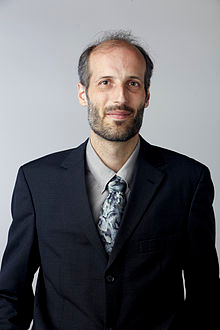
Taming infinities
December 2, 2015
Ballroom, O'Hara Student Center
Martin Hairer is an Austrian mathematician working in the field of stochastic analysis, in particular stochastic partial differential equations. He is Regius Professor of Mathematics at the University of Warwick, having previously held a position at the Courant Institute of New York University. He was awarded the Fields Medal in 2014.
2014
Prof. John Ball, Oxford University
Defects in Materials and their Mathematical Description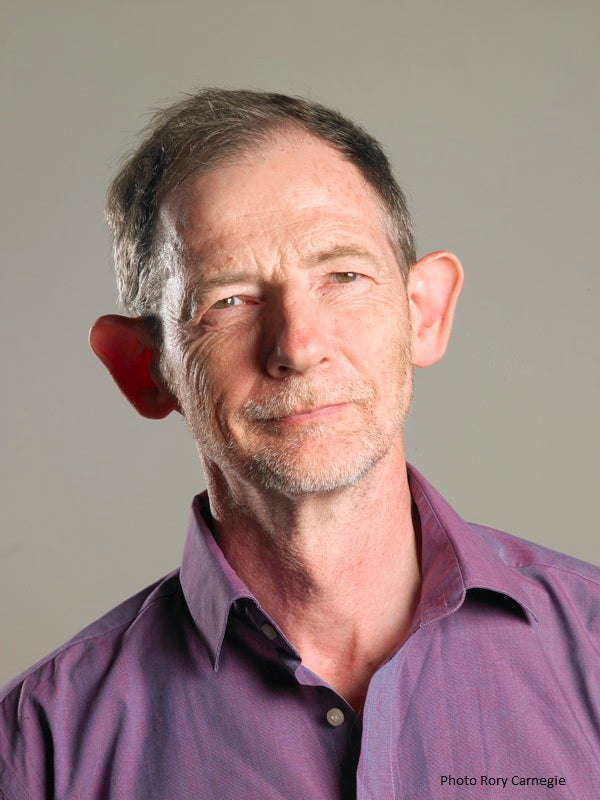
March 17, 2014 at 4 p.m.
Ballroom A, University Club at the University of Pittsburgh
John Ball is Sedleian Professor of Natural Philosophy at the University of Oxford and a Fellow of the Queen's College. He was President of the International Mathematical Union from 2003-06. His research interests include elasticity, the mathematics of solid and liquid crystals, the calculus of variations, and infinite-dimensional dynamical systems. He is a foreign member of the French Academy of Sciences and the Norwegian Academy of Science and Letters, and is a fellow of the Royal Societies of London and Edinburgh, and of the American Mathematical Society, among many other honors and prizes.
2013
Prof. Frank Morgan
Soap Bubbles, Tilings, and Other Partitioning Problems
March 22, 2013 at 4 p.m.
Ballroom B, University Club at the University of Pittsburgh
Abstract: The Ancient Greeks proved that the circle is the least-perimeter way to enclose given area.Similarly the round soap bubble provides the least-perimeter way to enclose a given volume of air, although that was not proved until 1884 by Schwarz. Similarly the double bubble that forms when two soap bubbles come together is the least-perimeter way to enclose and separate two given volumes of air, although that wasn't proved until 2000 by Hutchings, Morgan, Ritoré, and Ros.
Lord Kelvin sought the least-perimeter way to divide all of space into unit volumes, and his conjecture stood for 100 years, until Weaire and Phelan found a better way in 1994. Whether their new candidate is best remains open today. Even the least-perimeter way to divide the plane into unit areas, using the bees' hexagonal honeycomb tiling, though conjectured by the Ancient Greeks, was not proven until 1999 by Hales. The most efficient tiling by pentagons remains open.
In many simple nonEuclidean possible universes, even the ideal shape for a single soap bubble remains open.
2012
Prof. Shing-Tung Yau
 Geometry: from Riemann to Einstein and on to String Theory"
Geometry: from Riemann to Einstein and on to String Theory"
October 5, 2012
Shing-Tung Yau has made fundamental contributions to differential geometry which have influenced a widerange of scientific disciplines, including astronomy and theoretical physics. Yau’s first major contribution to differential geometry was his proof of the Calabi conjecture, which concerns how volume and distance can be measured not in four, but in five or more dimensions. In 1979 Yau and Richard Schoen proved Einstein’s positive mass conjecture by applying methods devised by Yau. The proof was based on their work with minimal surfaces. In 1982 Yau was awarded the Fields Medal, the highest award in mathematics, and in 1994 he shared with Simon Donaldson of Oxford University the Crafoord Prize of the Royal Swedish Society, in recognition of his “development of nonlinear techniques in differential geometry leading to the solution of several outstanding problems.” In 2010 Yau published the book The Shape of Inner Space.
2011
Sir Roger Penrose
"Can We See Through the Big Bang into Another World?"
January 24, 2011
Prof. Sir Roger Penrose has made many contributions to the fields of Mathematics and Physics. He proved that singularities (such as black holes) could be formed from the gravitational collapse of immense, dying stars and invented spin networks which later came to form the geometry of spacetime in loop quantum gravity. Prof. Penrose is also well known for his 1974 discovery of Penrose tilings, which are formed from two tiles that can only tile the plane non-periodically, and are the first tilings to exhibit fivefold rotational symmetry. He is the recipient of many awards and honors, including a Royal Medal from the Royal Society and a Wolf Prize, which he shares with Stephen Hawking. Prof. Penrose’s book "The Road to Reality" gives a comprehensive guide to the laws of physics. His latest book is "Cycles of Time."
2010
Prof. Luis A. Caffarelli
"Non linear, geometric homogenization"
March 26, 2010
Professor Luis A. Caffarelli holds the Sid Richardson Chair in Mathematics at the University of Texas at Austin.The focus of his research has been elliptic nonlinear partial differential equations and their applications. Some of his most significant contributions are the regularity of free boundary problems and solutions to nonlinear
elliptic equations, optimal transportation theory and, more recently, results in the theory of homogenization.
Professor Caffarelli is a member of the National Academy of Sciences. He has been awarded Doctor Honoris Causa from l'Ecole Normale Superieure in Paris, Universidad Autónoma de Madrid, and Universidad de la Plata in Argentina. He received the Bôcher Prize in 1984 and the prestigious Rolf Schock Prize in Mathematics of the Royal Swedish Academy of Sciences in 2005. He was recently awarded the Leroy P. Steele Prize for Lifetime Achievement in Mathematics.
2009
Tony F. Chan
"Images, PDEs and Wavelets"
March 20, 2009
Dr. Chan's research interests include mathematical image processing and computer vision, VLSI physical design and computational brain mapping. He is a Fellow of the American Association for the Advancement of Science. Dr. Chan has published over 200 refereed papers and has mentored over 25 PhD students and 15 postdoctoral fellows. He is a co-founder of the Institute for Pure and Applied Mathematics at UCLA, established to promote collaborations between the mathematical sciences and the general scientific and engineering disciplines. Dr. Chan currently serves as Assistant Director of the Directorate for Mathematical and Physical Sciences at the National Science Foundation. The MPS is the largest Directorate at NSF with an annual budget of just over $1B.
View more information (PDF) »
Tony F. Chan's Home Page »
2008
Neil J. A. Sloane
"The Online Encyclopedia of Integer Sequences: Solved and Unsolved Problems"
April 4, 2008
Neil Sloane is a Fellow at AT&T Shannon Labs in Florham Park, NJ. He
is a member of the National Academy of Engineering, an IEEE Fellow, and recipient of the IEEE Hamming Medal and the MAA Chauvenet Prize. He is the author or co-author of numerous books, including “The Theory of Error-Correcting Codes” (with F. J. MacWilliams) and “Sphere Packing, Lattices and Groups” (with J. H. Conway).
View more information (PDF) »
Neil J. A. Sloane's Home Page »
2007
Dr. Cathleen Morawetz
"Collisionless Shocks in Space"
April 6, 2007
Professor Cathleen Morawetz is a Fellow of the American Association for the Advancement of Science, the American Academy of Arts and Sciences, and National Academy of Sciences. She was Director of the Courant Institute of Mathematical Sciences, and the President of the American Mathematical Society. She receieved the National Medal of Science in 1998, and the Lifetime Acheivement award from the Americam Mathematical Society in 2004.
2006
Robert F. Engle, Ph.D., Nobel Laureate
 "Global Volatility: its Measurement, Interpretation and Causes"
"Global Volatility: its Measurement, Interpretation and Causes"
April 7, 2006
Dr. Engle was awarded the 2003 Bank of Sweden Prize in Economic Sciences in Memory of Alfred Nobel for "methods of analyzing economic time series with time-varying volatility (ARCH)."
Dr. Engle received his PhD in economics from Cornell University in 1966. His work is distinguished by exceptional creativity in the empirical modeling of dynamic economic and financial phenomena. He is a renowned expert in Financial Economics, Time Series Analysis, Volitility and Risk Management and Empirical Market Microstructure.